Best Practices for Metal Fence Painting For Long-Lasting Results
We rolled up to a baseball field in Birmingham, Michigan just days before the first pitch.
The dugout entrance was showing its age—chalking paint, pitted fittings, and a top rail etched with rust.
By the weekend, the fence didn’t just look fresh—it felt and looked new. Smooth to the touch, reinforced at the weak points, and ready for seasons of hard use.
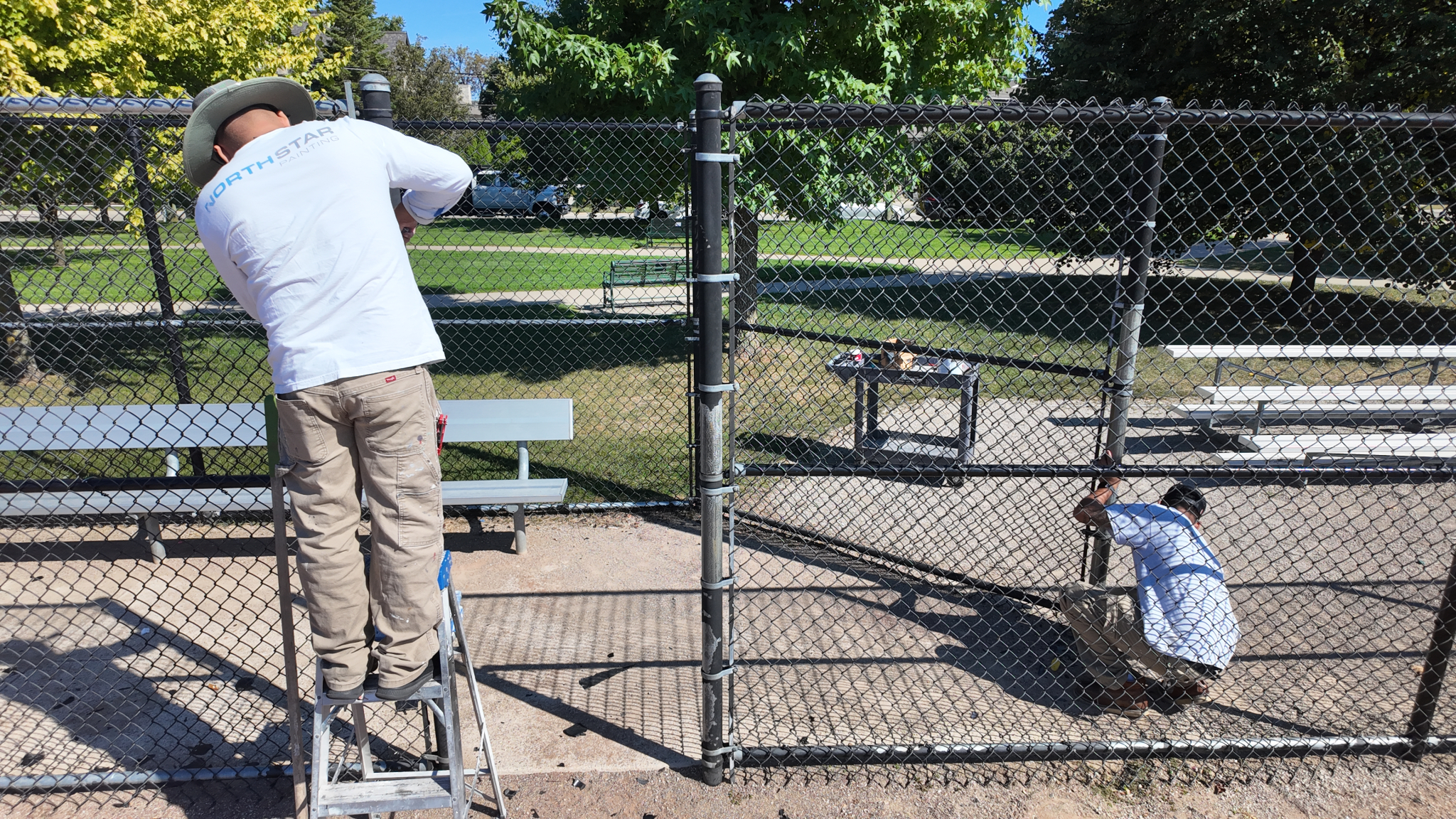
Why Ballpark Fencing Are Brutal on Coatings
Ballparks are tough environments. Sweat, bat racks, foul balls, and constant hand traffic wear down coatings fast—especially at welds, edges, and corners.
UV exposure cooks the top rails. Sprinklers mist water where you least want it. And wind turns overspray into confetti.
Hidden gem: “Stripe coating” critical areas—like fasteners, corners, and welds—adds a targeted layer of protection exactly where failures usually begin.
Product Choice: Why It Mattered Here
We selected Sherwin-Williams Pro Industrial Multi-Surface Acrylic—a waterborne, self-priming, spray-optimized coating with dry-fall properties.
Performance specs that made a difference:
-
Wet mils: 3.75–6.0 → dries to 1.4–2.2 mils per coat
-
Recoat window: ~2 hours at 77°F / 50% RH
-
Dry-fall behavior: ~10–15 feet
Hidden gem: This product has a tight application window—air/surface/material temps must be 50–100°F, RH ≤85%, and ≥5°F above dew point. Miss those conditions and you’re building failure into the job.
Prep That Wins the Season
- Mask and protect. Shield grass lines, bleachers, and signage.
-
Scrape and sand to a firm edge (SP2 hand tool at minimum). Use power or abrasive tools where rust crests are present.
-
Feather and fill. Hairline cracks get compatible filler, then sanded smooth.
Hidden gem: Galvanized steel demands attention. Test patches can tell if you’re ready to coat—or if you need SSPC-SP16 brush blasting to break through passivation.
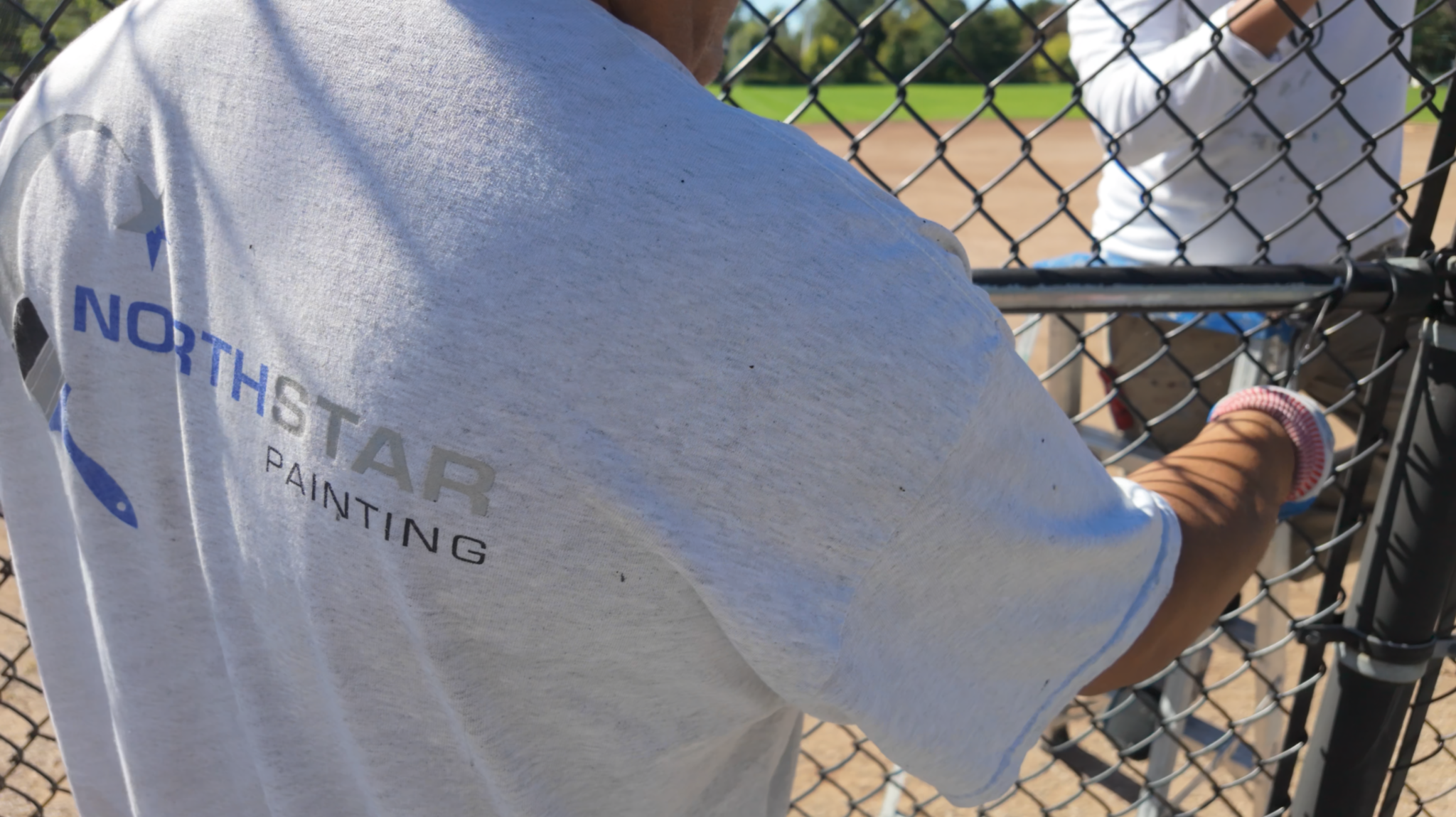
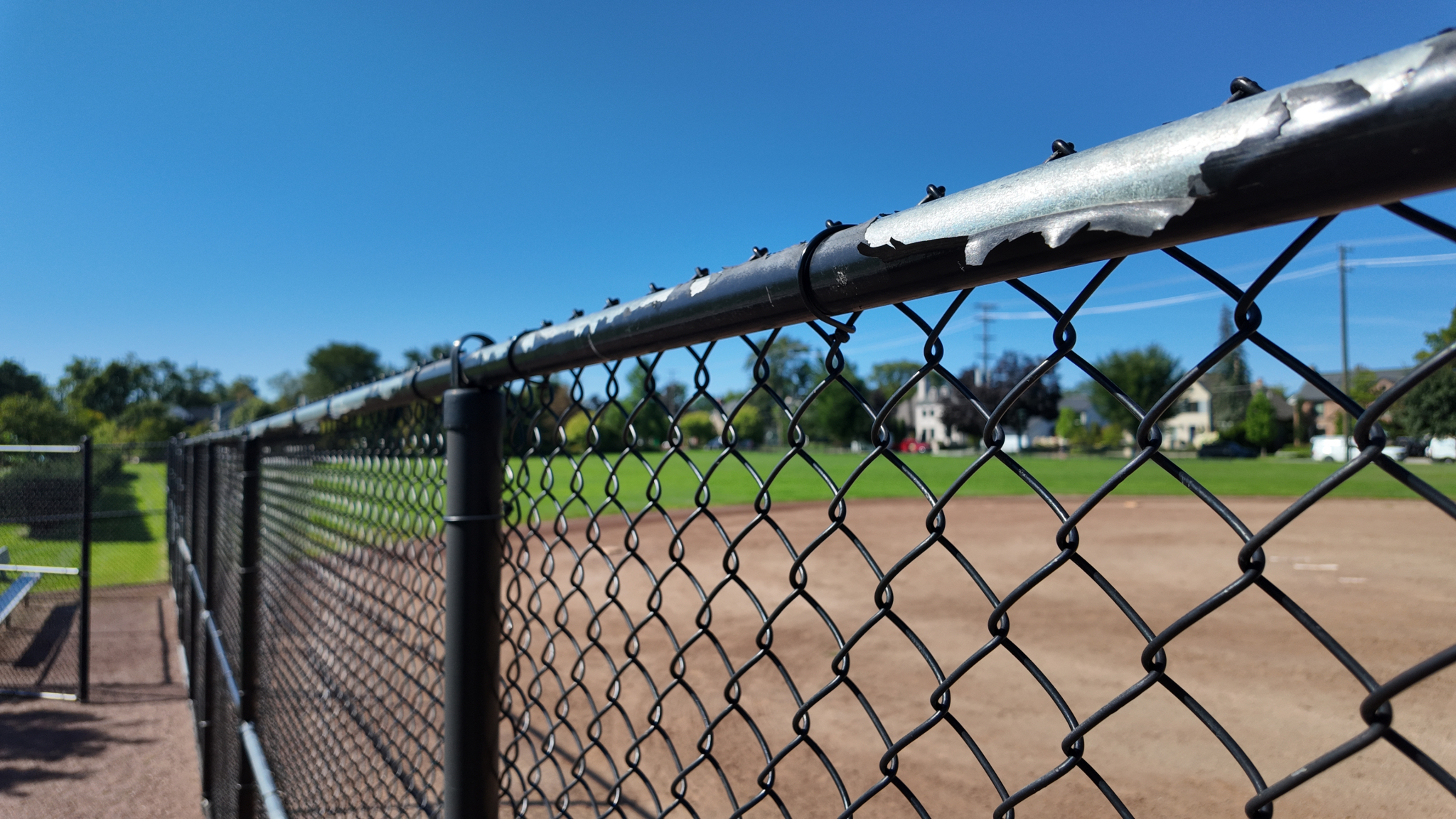
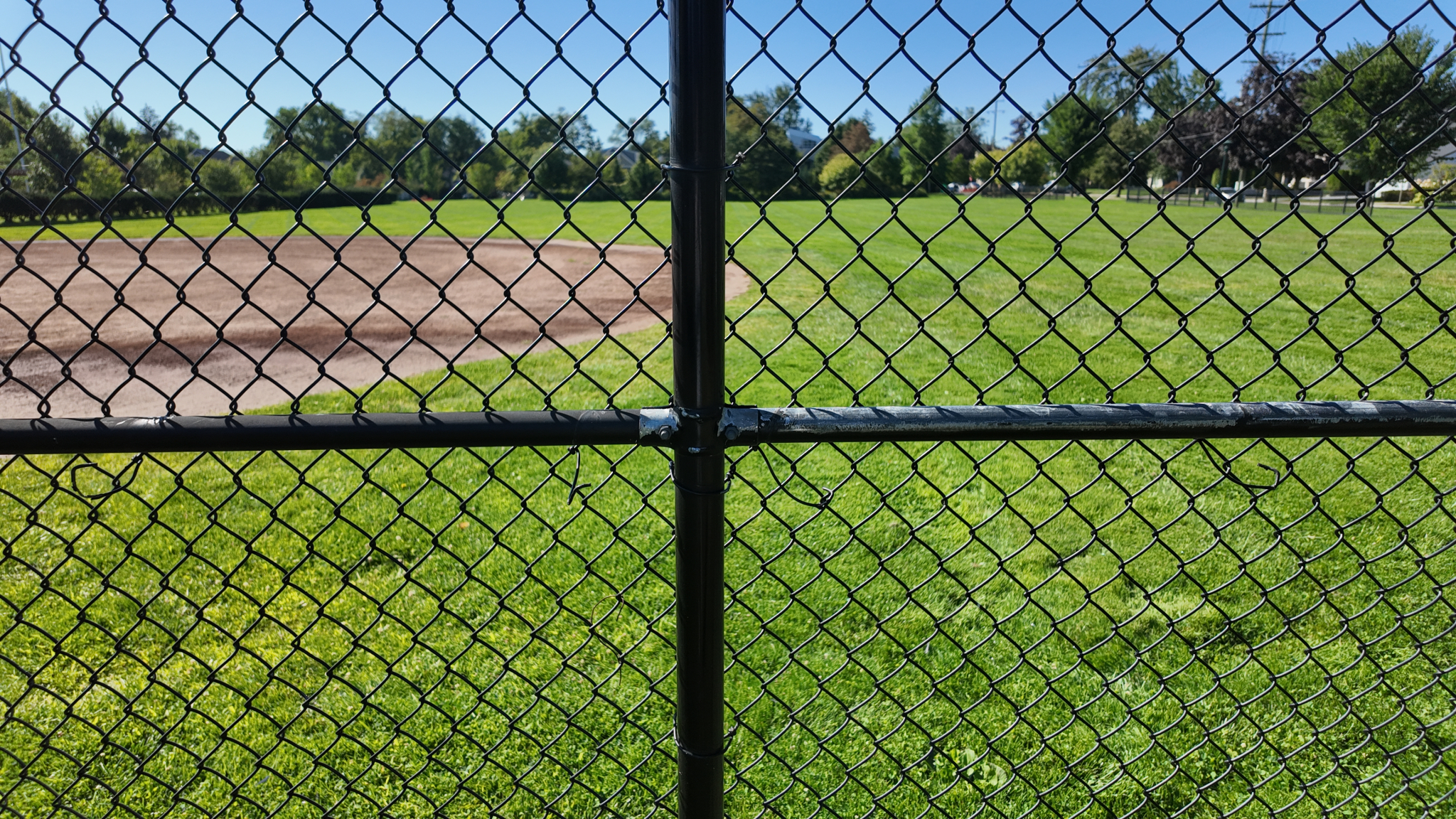
Hidden gem: Chain-link coatings are all about sequence. Start on the windward side to push paint through the mesh, then move to the leeward side to catch any misses. Use wind shields and maintain consistent gun distance to avoid “shadowing” behind wires.
Simple Quality Control That Works
Borrow proven inspection habits from the industrial world:
- Adhesion checks: Quick tape tests per ASTM D3359 confirm your prep held up. Use the X-cut for thicker films, cross-hatch for thinner ones
- Recoat timing: Don’t rush it. Stick to the recoat window—around 2 hours at 77°F / 50% RH—to avoid intercoat failure.
The Reveal
We dialed in the process from start to finish.
Targeted striping and tuned spray patterns ensured even coverage.
Edges and fittings got extra attention.
Top rails? A second pass to handle high-contact wear.
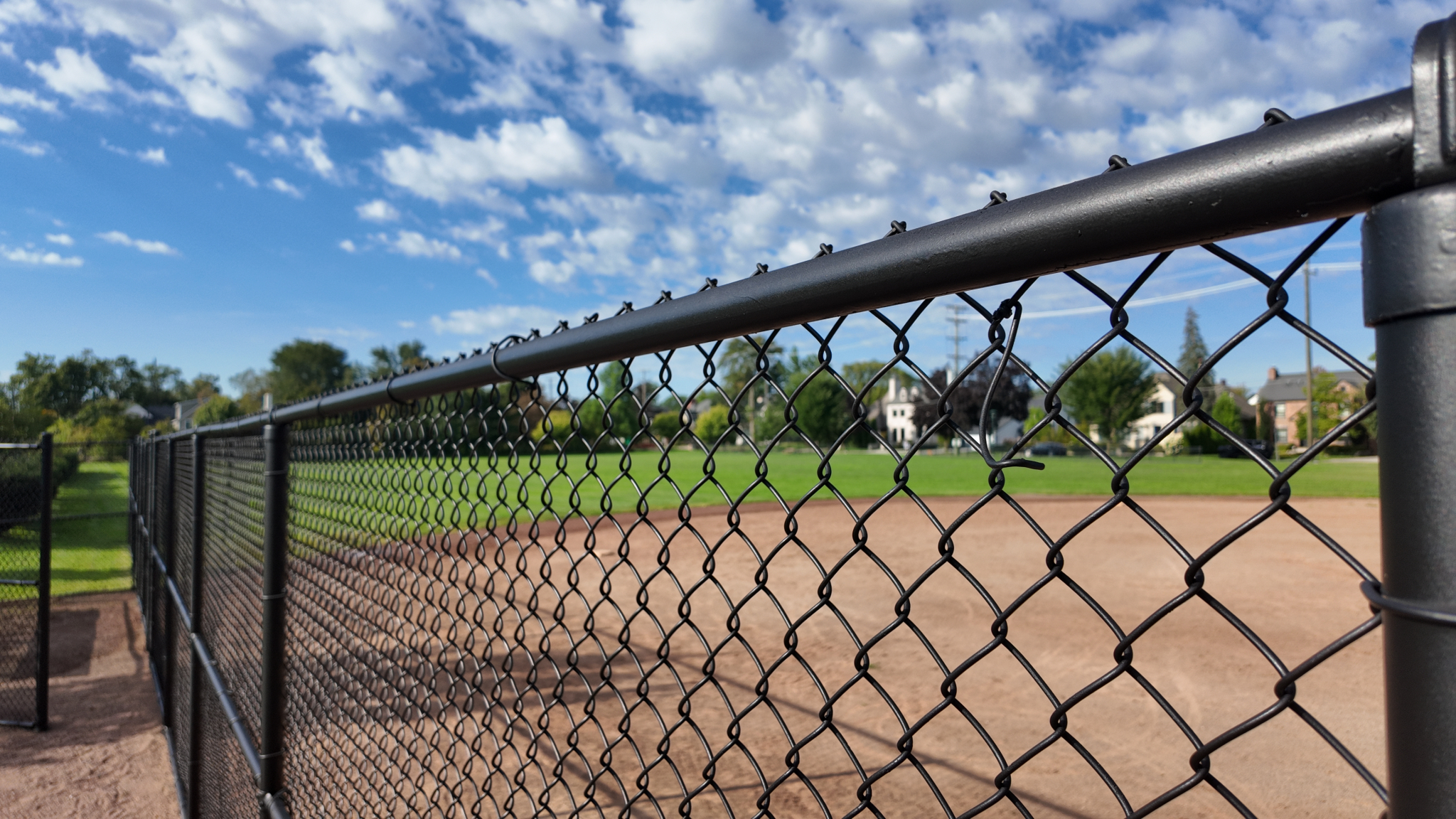
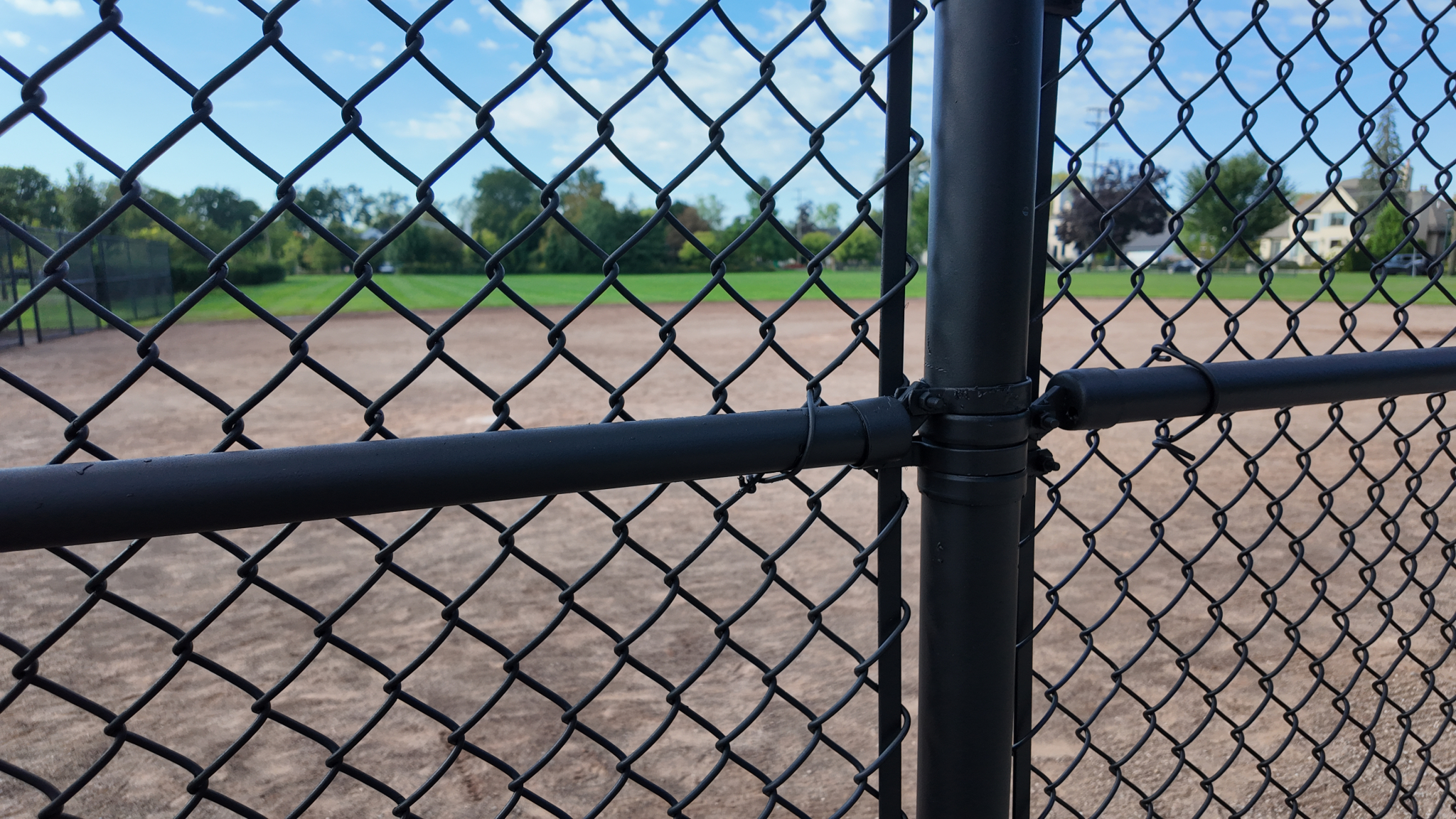
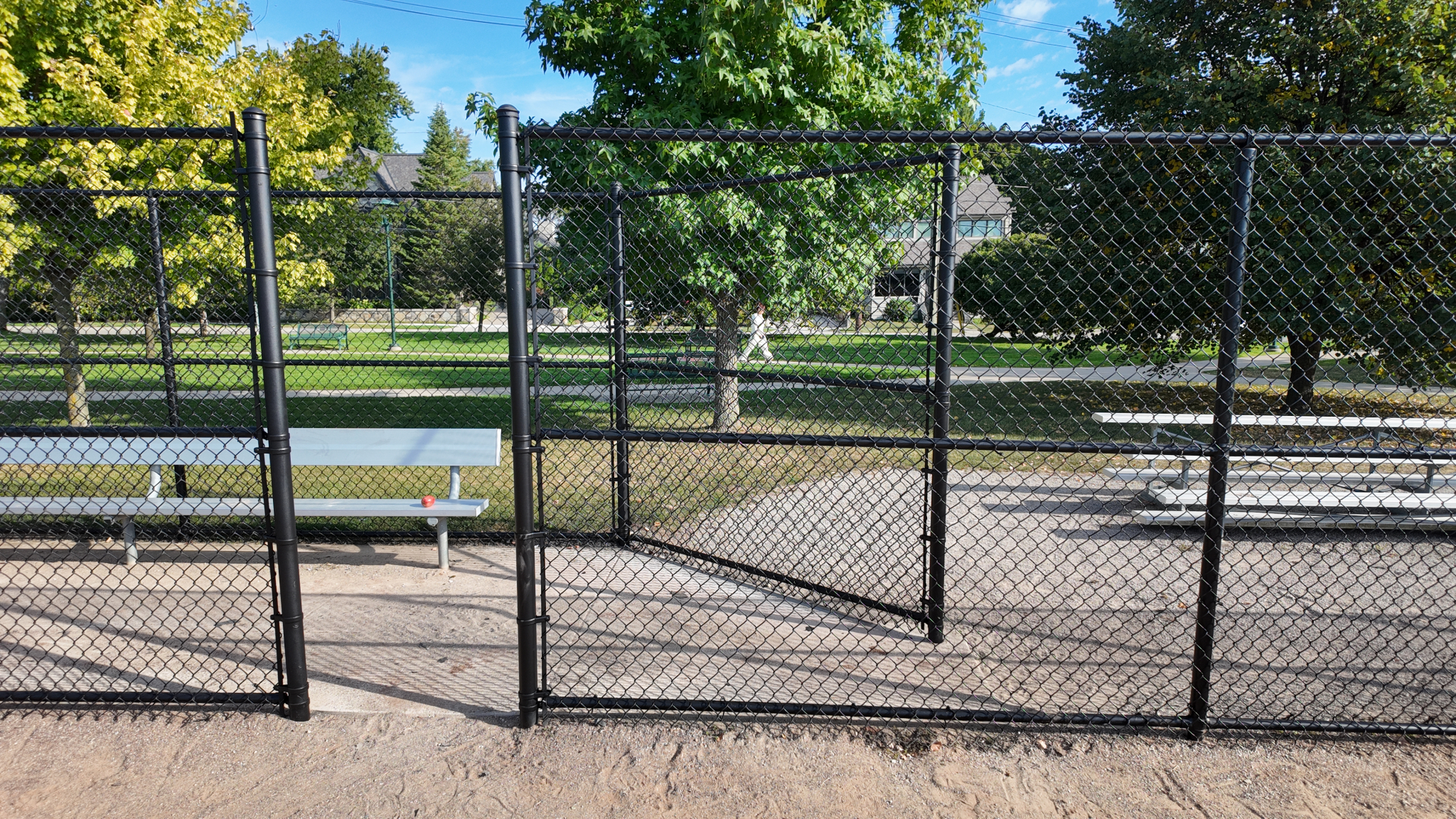
Field-Tested Tips You Can Steal Today
Use dry-fall behavior near turf and seating to simplify cleanup. This product powders out within ~10-15 ft under standard conditions.
Avoid painting right after rain or during fog; moisture on metal kills adhesion.
On glossy survivors, scuff to dull before coating. Adhesion loves profiles.
If galvanized was chromate-treated, expect poor adhesion without SP16 or equivalent profiling; always test-patch first.
Next Steps
Schedule a fence audit. We’ll map failure points, test-patch galvanized areas, and design a stripe-coat plan that matches your traffic patterns.
Book off-season or off-hours. We can stage work around your calendar to protect spectators, turf, and gear while maximizing cure time.

